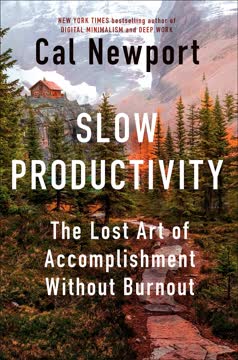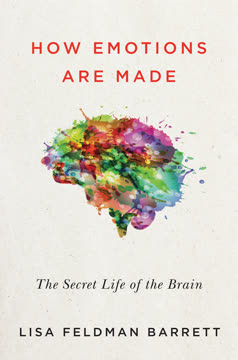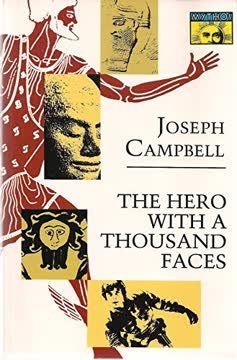Key Takeaways
1. Rhetoric is the art of persuasion, shaping human interaction and society
Rhetoric is language at play—language plus. It is what persuades and cajoles, inspires and bamboozles, thrills and misdirects.
Omnipresent influence. Rhetoric is not just for formal speeches or debates; it permeates every aspect of our lives. From casual conversations to political campaigns, from advertising to literature, rhetoric shapes how we communicate and perceive the world around us. It is the invisible force that drives human interaction and decision-making.
Historical significance. Throughout history, rhetoric has been a powerful tool for social and political change. The American Revolution, civil rights movements, and major policy shifts have all been driven by effective use of rhetoric. Understanding rhetoric allows us to appreciate its role in shaping our societies and cultures, and to recognize its influence in our daily lives.
Critical thinking tool. By studying rhetoric, we become more discerning consumers of information. It equips us to analyze arguments, detect manipulation, and make informed decisions. In an age of information overload and "fake news," rhetorical awareness is an essential skill for navigating the complex landscape of modern communication.
2. The three pillars of persuasion: Ethos, Logos, and Pathos
Ethos: "Buy my old car because I'm Tom Magliozzi." Logos: "Buy my old car because yours is broken and mine is the only one on sale." Pathos: "Buy my old car or this cute little kitten, afflicted with a rare degenerative disease, will expire in agony, for my car is the last asset I have in the world, and I am selling it to pay for kitty's medical treatment."
Ethos: Establishing credibility. Ethos appeals to the speaker's character and authority. It's about building trust and demonstrating expertise. Effective use of ethos involves:
- Showcasing relevant qualifications or experience
- Demonstrating shared values with the audience
- Maintaining a consistent and authentic persona
Logos: Appealing to logic. Logos relies on reason and evidence to persuade. It involves:
- Presenting facts, statistics, and expert opinions
- Using clear, logical reasoning
- Anticipating and addressing counterarguments
Pathos: Stirring emotions. Pathos taps into the audience's feelings and values. Effective pathos includes:
- Using vivid language and imagery
- Telling relatable stories or anecdotes
- Appealing to shared hopes, fears, or aspirations
Balancing these three elements is crucial for effective persuasion. While logos provides the substance of an argument, ethos ensures the audience trusts the speaker, and pathos motivates them to act on the information presented.
3. Invention: Discovering the best available means of persuasion
Aristotle said that the basic job of the rhetorician was to "discover the best available means of persuasion."
Tailoring to the audience. Effective invention requires a deep understanding of your audience. Consider their:
- Demographics (age, gender, education, etc.)
- Values and beliefs
- Existing knowledge and attitudes about the topic
- Potential objections or concerns
Gathering evidence. Compile a range of supporting materials:
- Facts and statistics
- Expert opinions
- Historical examples
- Personal anecdotes
- Analogies and metaphors
Developing arguments. Craft persuasive arguments by:
- Identifying key issues and points of contention
- Anticipating counterarguments
- Finding common ground with opponents
- Framing issues in a favorable light
Invention is not about fabricating information, but about discovering and organizing the most compelling arguments and evidence for your case. It's the foundation upon which all other aspects of rhetoric are built.
4. Arrangement: Structuring your argument for maximum impact
It is not without reason that arrangement is considered the second of the five parts of oratory, for though all the limbs of a statue be cast, it is not a statue until they are united.
Classical structure. The traditional arrangement of a speech includes:
- Exordium (Introduction): Grab attention and establish credibility
- Narration: Present the background and context
- Division: Outline the main points of argument
- Proof: Present evidence and reasoning
- Refutation: Address counterarguments
- Peroration (Conclusion): Summarize and call to action
Strategic ordering. Consider the psychological impact of your argument's structure:
- Start strong to capture attention
- Address easier points before more complex ones
- Save your strongest argument for last (recency effect)
- Use transitions to create a smooth flow of ideas
Flexibility and adaptation. While classical structure provides a useful framework, be prepared to adapt to your specific context. Factors to consider include:
- Time constraints
- Audience expectations
- Cultural norms
- Medium of communication (spoken, written, digital)
Effective arrangement ensures that your arguments are not only strong individually but also work together to create a cohesive and compelling whole.
5. Style: Crafting language to captivate and convince
The flowers of rhetoric were hothouse plants.
Clarity and concision. The foundation of good style is clear, precise language. Avoid jargon, unnecessary complexity, and verbosity. Aim for:
- Short, punchy sentences
- Active voice
- Concrete rather than abstract terms
Figurative language. Enhance your message with:
- Metaphors and similes
- Vivid imagery
- Alliteration and other sound devices
Rhetorical devices. Employ classical techniques to add power and memorability:
- Anaphora (repetition at the beginning of clauses)
- Chiasmus (reversed parallel structure)
- Tricolon (series of three)
- Antithesis (juxtaposition of contrasting ideas)
Adaptability. Tailor your style to your audience and context. Consider:
- Formal vs. informal tone
- Technical vs. layman's terms
- Cultural references and idioms
Remember, the goal of style is not mere ornamentation, but to make your message more compelling and memorable. As Cicero said, "The supreme orator is the one whose speech instructs, delights, and moves the minds of his audience."
6. Memory and Delivery: Bringing your words to life
Decorum can be seen as the ethos appeal working at the level of the language itself.
Memory techniques. While modern speakers often rely on notes or teleprompters, developing a strong memory can enhance your delivery:
- Method of loci: Associating parts of your speech with physical locations
- Chunking: Grouping information into manageable units
- Repetition and rehearsal: Practicing until the speech feels natural
Vocal delivery. Pay attention to:
- Volume: Vary for emphasis and to maintain interest
- Pace: Slow down for important points, speed up for energy
- Pitch: Use inflection to convey emotion and meaning
- Pauses: Strategic silences can be powerful
Non-verbal communication. Your body language speaks volumes:
- Eye contact: Builds connection and trust
- Gestures: Reinforce your points visually
- Posture: Conveys confidence and authority
- Facial expressions: Match your words with appropriate emotions
Adaptability. Be prepared to adjust your delivery based on:
- Audience reactions
- Time constraints
- Technical issues
- Unexpected interruptions or questions
Effective delivery brings your carefully crafted words to life, turning a mere speech into a memorable performance that resonates with your audience long after you've finished speaking.
7. The three branches of oratory: Deliberative, Judicial, and Epideictic
The genres of rhetoric are three in number, which is the number of the types of audience. For a speech is composed of three factors—the speaker, the subject and the listener—and it is to the last of these that its purpose is related.
Deliberative rhetoric. Focused on future actions and policy decisions:
- Purpose: To persuade or dissuade
- Context: Political debates, business strategy meetings
- Key considerations: Advantage/disadvantage, feasibility, ethics
Judicial rhetoric. Concerned with past events and determining justice:
- Purpose: To accuse or defend
- Context: Court cases, performance reviews
- Key considerations: Evidence, legal or moral standards, intent
Epideictic rhetoric. Addresses present values and cultural norms:
- Purpose: To praise or blame
- Context: Ceremonies, eulogies, award presentations
- Key considerations: Shared values, emotional resonance, cultural significance
Understanding these branches helps speakers tailor their approach to the specific purpose and context of their speech. While modern communication often blends these categories, recognizing their distinct characteristics can enhance the effectiveness of any persuasive effort.
8. Great orators in history: From Cicero to Obama
Churchill consciously marshaled, as the best orators will, not only the language of the past but its history to his cause—invoking Drake and Nelson as exemplars and, implicitly, allies in the struggle.
Learning from the masters. Studying great orators provides:
- Inspiration for style and technique
- Insights into effective argumentation
- Examples of adapting to different contexts and audiences
Key figures and their contributions:
- Cicero: Mastery of judicial rhetoric and Latin prose style
- Martin Luther King Jr.: Powerful use of metaphor and moral persuasion
- Winston Churchill: Stirring wartime speeches and memorable phrases
- Barack Obama: Blending of high oratory with conversational tone
Evolution of oratory. Tracing the development of public speaking reveals:
- Shifts in cultural values and expectations
- Technological impacts (e.g., radio, television, social media)
- The enduring power of well-crafted language
By examining these influential speakers, we gain a deeper appreciation for the art of rhetoric and practical techniques to apply in our own communication.
9. The power of figures and tropes in rhetorical language
A figure (as in "figure of speech") and a trope, or turn (as in "turn of phrase"), are ways of describing twists of language. They are sometimes called flores rhetoricae—"the flowers of rhetoric."
Enhancing impact. Figures and tropes:
- Make language more memorable and engaging
- Add emotional resonance to arguments
- Create subtle connections between ideas
Common figures:
- Anaphora: Repetition at the beginning of clauses
- Chiasmus: Reversed parallel structure
- Alliteration: Repetition of initial consonant sounds
- Antithesis: Juxtaposition of contrasting ideas
Powerful tropes:
- Metaphor: Implied comparison between unlike things
- Synecdoche: Using a part to represent the whole
- Irony: Expressing meaning opposite to the literal sense
- Hyperbole: Deliberate exaggeration for effect
Strategic use. When employing figures and tropes:
- Ensure they enhance rather than obscure your message
- Use sparingly for maximum impact
- Choose devices that resonate with your audience and context
Understanding these linguistic tools allows speakers to craft more compelling and memorable messages, elevating everyday language into powerful rhetoric.
10. Rhetoric in the modern world: From politics to advertising
Rhetoric is hustling, and our forefathers knew it.
Pervasive influence. Rhetoric shapes:
- Political campaigns and governance
- Marketing and advertising strategies
- Social media discourse
- Public relations and crisis management
New challenges. Modern communicators must navigate:
- Information overload and shortened attention spans
- Diverse global audiences
- Rapid spread of information (and misinformation)
- Evolving media platforms and technologies
Ethical considerations. The power of rhetoric raises important questions:
- Responsibility in public discourse
- Balancing persuasion with truthfulness
- Addressing inequalities in access to rhetorical tools
- Combating manipulation and propaganda
Developing rhetorical literacy. In today's world, it's crucial to:
- Critically analyze persuasive messages
- Recognize rhetorical techniques in various media
- Understand the context and motivations behind communication
Last updated:
FAQ
What's Words Like Loaded Pistols about?
- Exploration of Rhetoric: The book explores the art of persuasion, tracing its evolution from ancient times to modern figures like Barack Obama. It highlights rhetoric as a fundamental part of everyday communication, not just for politicians.
- Historical Context: Sam Leith discusses key figures in the history of rhetoric, such as Aristotle, Cicero, and Lincoln, and their contributions to rhetorical techniques that remain relevant today.
- Practical Application: The book aims to equip readers with a working knowledge of rhetorical techniques, enabling them to analyze and understand persuasive language in various contexts.
Why should I read Words Like Loaded Pistols?
- Understanding Persuasion: The book enhances your ability to recognize and analyze persuasive techniques in speeches, advertisements, and everyday conversations.
- Engaging Writing Style: Leith's witty and accessible prose makes complex concepts enjoyable and easy to grasp, appealing to both novices and those familiar with rhetoric.
- Cultural Relevance: It connects historical rhetoric to contemporary issues, making it relevant for anyone interested in politics, communication, or social dynamics.
What are the key takeaways of Words Like Loaded Pistols?
- Rhetoric is Everywhere: Rhetoric permeates all forms of communication, from political speeches to casual conversations. Understanding it can empower individuals to navigate and influence discussions effectively.
- Five Parts of Rhetoric: The book outlines the five canons of rhetoric: invention, arrangement, style, memory, and delivery, providing a framework for crafting persuasive arguments.
- Three Appeals: Leith discusses Aristotle's three persuasive appeals—ethos (credibility), pathos (emotion), and logos (logic)—and how they function in effective communication.
What are the best quotes from Words Like Loaded Pistols and what do they mean?
- "Rhetoric is, as simply defined as possible, the art of persuasion.": This quote encapsulates the essence of the book, highlighting that rhetoric is fundamentally about influencing others through language.
- "Rhetoric means a whole lot more than formal, stand-at-the-podium oratory.": Leith stresses that rhetoric is not limited to public speaking; it is a vital part of everyday interactions and communication.
- “Words are the only things which last forever.”: This quote underscores the enduring power of language and rhetoric, suggesting that while actions may fade, the impact of words can resonate through time.
How does Words Like Loaded Pistols define rhetoric?
- Art of Persuasion: Leith defines rhetoric as the art of persuasion, focusing on how language can influence thoughts and actions. It is about effectively convincing an audience.
- Historical and Practical: The book presents rhetoric as both a historical discipline and a practical skill, drawing on examples from history to illustrate its societal impact.
- Dynamic and Evolving: Rhetoric is portrayed as a dynamic field that evolves with culture and technology, encouraging adaptation of techniques to contemporary contexts.
What are the five parts of rhetoric as defined in Words Like Loaded Pistols?
- Invention: This is the process of discovering the best available means of persuasion, involving brainstorming and selecting effective arguments for your audience.
- Arrangement: Refers to organizing the speech or writing in a coherent structure, typically including an introduction, narration, division, proof, refutation, and peroration.
- Style: Encompasses the choice of language and rhetorical devices used to enhance the message, varying from high and ornate to plain and straightforward.
How does Words Like Loaded Pistols define the concept of ethos?
- Credibility of the Speaker: Ethos refers to the character and credibility of the speaker, crucial for establishing trust with the audience.
- Connection with the Audience: The speaker should align their interests with those of the audience, creating a sense of shared values and goals.
- Examples in Practice: Leith illustrates ethos through historical figures like Lincoln, who effectively established his credibility and connection with the audience.
What is the significance of pathos in Words Like Loaded Pistols?
- Emotional Appeal: Pathos is the appeal to the audience's emotions, aiming to evoke feelings such as pity, anger, or joy.
- Shared Experience: Effective use of pathos involves tapping into shared experiences or values, making the audience feel personally invested in the argument.
- Historical Examples: Leith provides examples of speeches that successfully employed pathos, demonstrating how emotional resonance can sway public opinion.
How does Words Like Loaded Pistols address the concept of logos?
- Logical Argumentation: Logos refers to the logical appeal of an argument, relying on reason and evidence to persuade the audience.
- Use of Evidence: Effective logos includes the presentation of facts, statistics, and logical reasoning to support claims.
- Examples of Logos: Leith discusses historical speeches that exemplify the use of logos, illustrating how logical reasoning can be combined with emotional and ethical appeals.
What is the method of loci mentioned in Words Like Loaded Pistols?
- Memory Technique: The method of loci is a mnemonic device that involves visualizing a familiar place and associating items or concepts with specific locations within that space.
- Historical Significance: Leith discusses its origins in ancient rhetoric, where it was used to improve public speaking skills.
- Practical Application: By creating a "memory palace," individuals can effectively organize and retrieve information, making it a valuable tool for improving memory.
How does Words Like Loaded Pistols connect historical rhetoric to modern communication?
- Continuity of Rhetorical Techniques: Leith illustrates that many rhetorical techniques used by historical figures are still relevant today.
- Impact of Technology: The book discusses how advancements in technology, such as the internet and social media, have transformed the landscape of rhetoric.
- Cultural Significance: By connecting historical rhetoric to modern examples, Leith highlights the ongoing importance of persuasive language in shaping public opinion and social movements.
How does Sam Leith illustrate the importance of delivery in rhetoric?
- Critical Component: Delivery is crucial for the effectiveness of a speech, often more so than the content itself.
- Voice and Gesture: The book discusses the importance of vocal control and physical gestures in delivering a speech.
- Real-Time Interaction: Leith highlights that speakers must read their audience's reactions and adjust their delivery accordingly.
Review Summary
Words Like Loaded Pistols explores the art of rhetoric from ancient times to modern day. Readers appreciate Leith's engaging writing style, humor, and numerous examples from history and pop culture. The book covers rhetorical techniques, famous orators, and practical applications. While some found it too advanced or tedious, many praised its accessibility and usefulness for students and professionals alike. Critics noted its dated references and occasionally condescending tone. Overall, readers found it an informative and entertaining introduction to the power of persuasive language.
Similar Books







Download PDF
Download EPUB
.epub digital book format is ideal for reading ebooks on phones, tablets, and e-readers.





